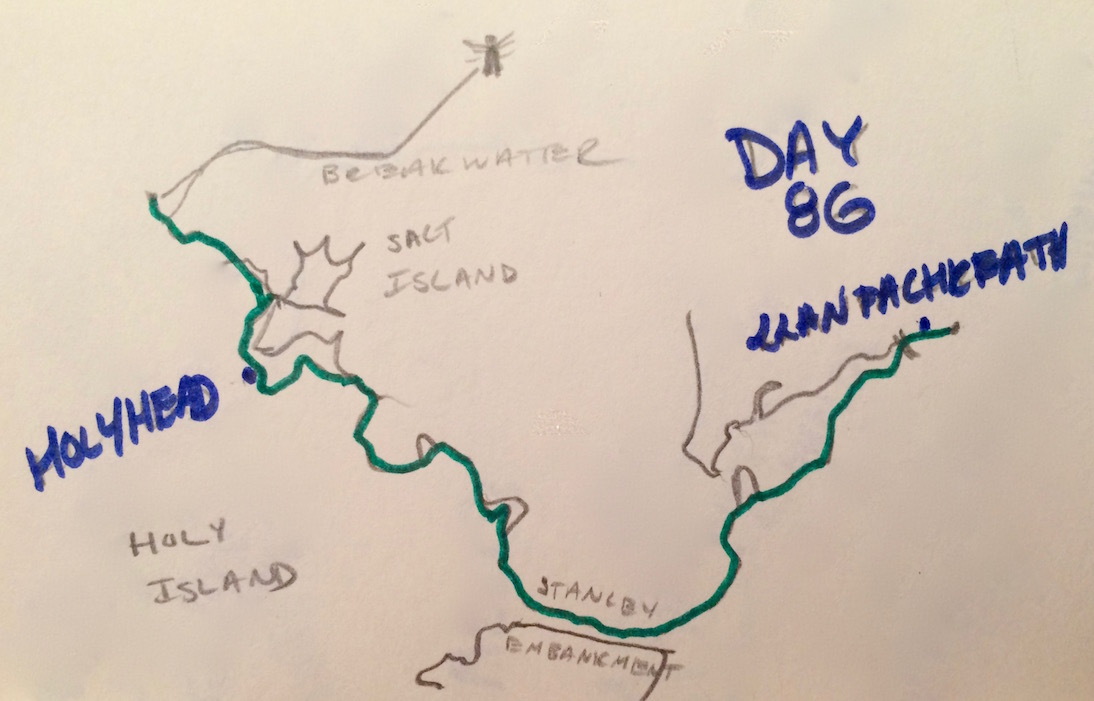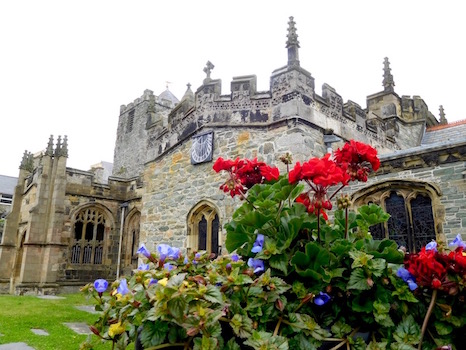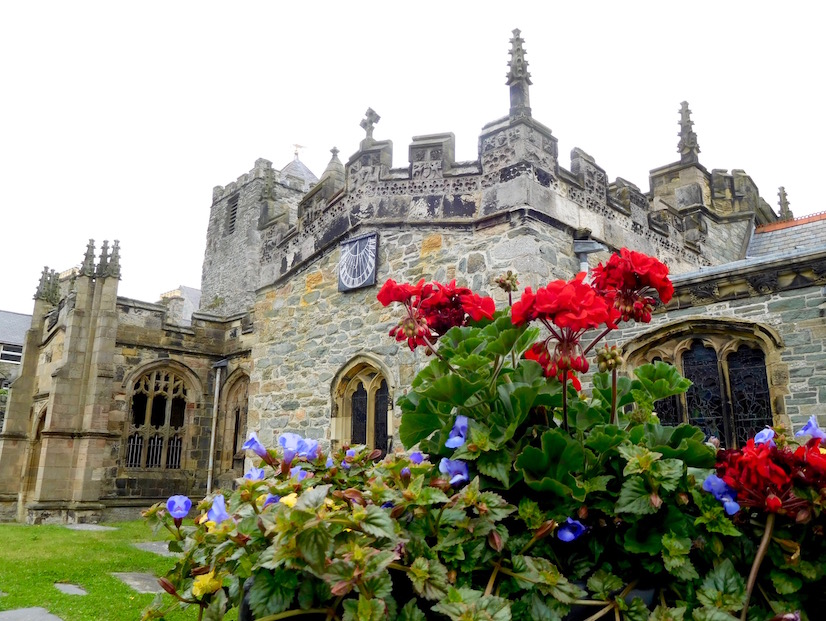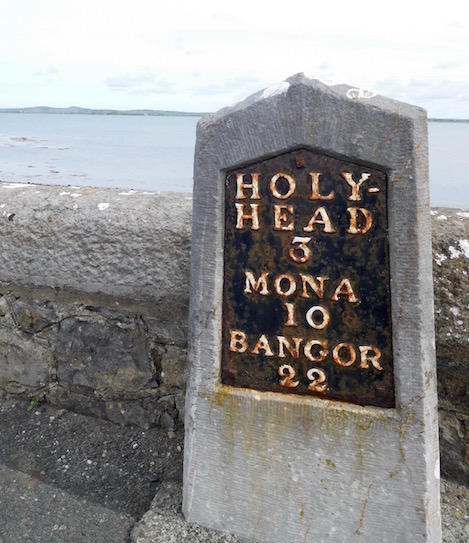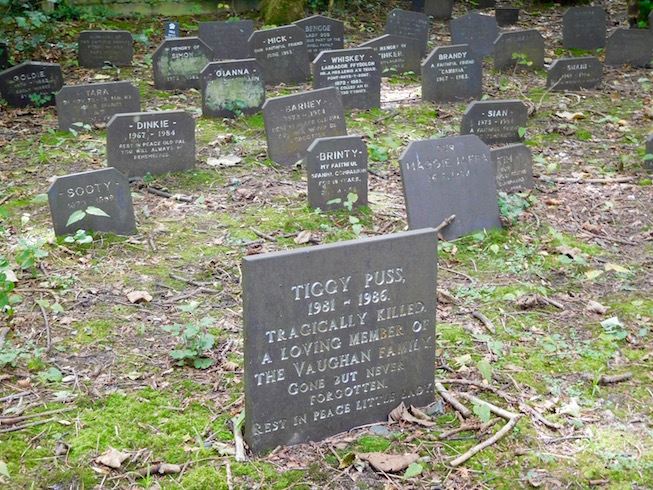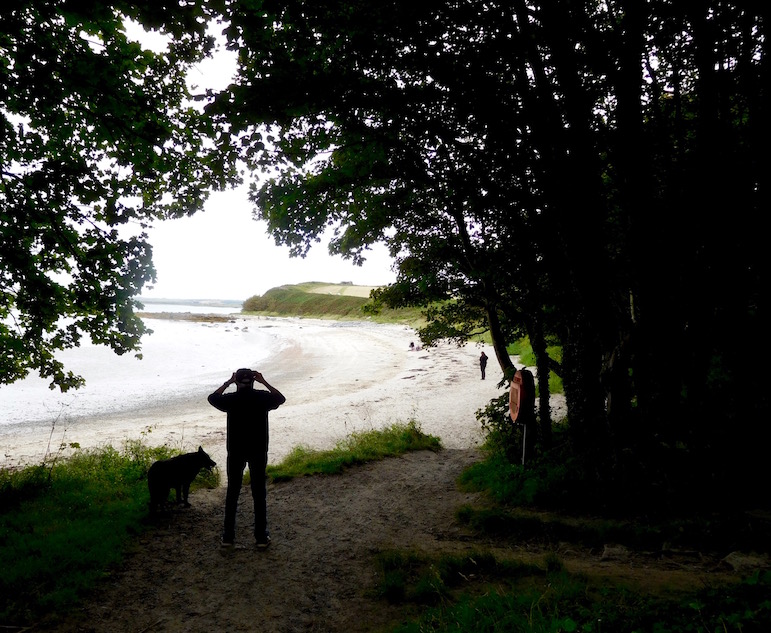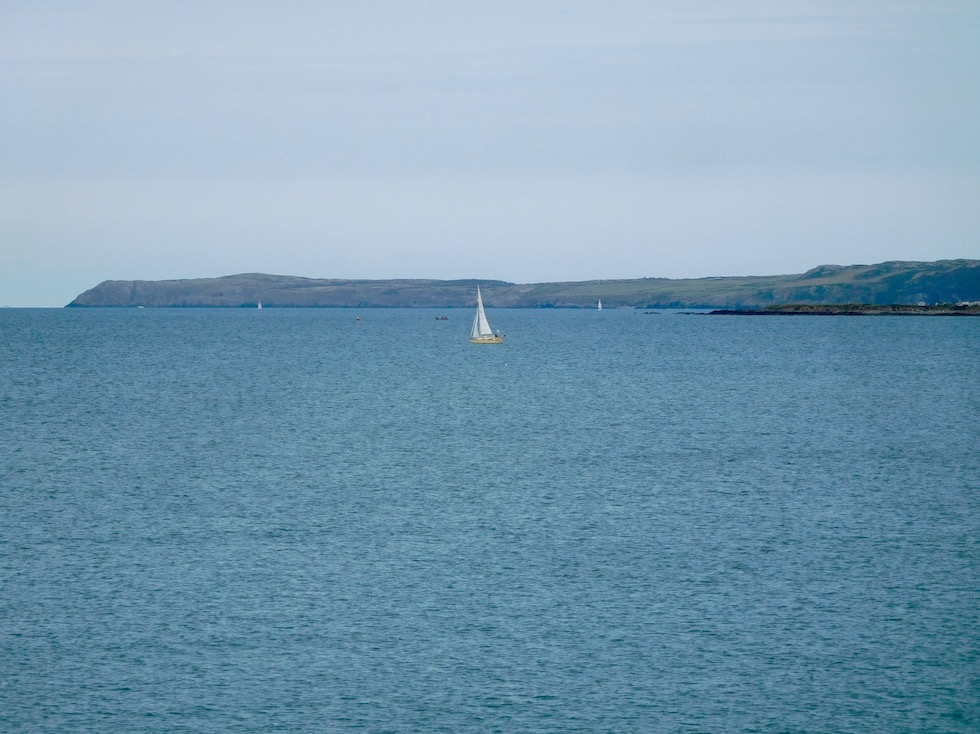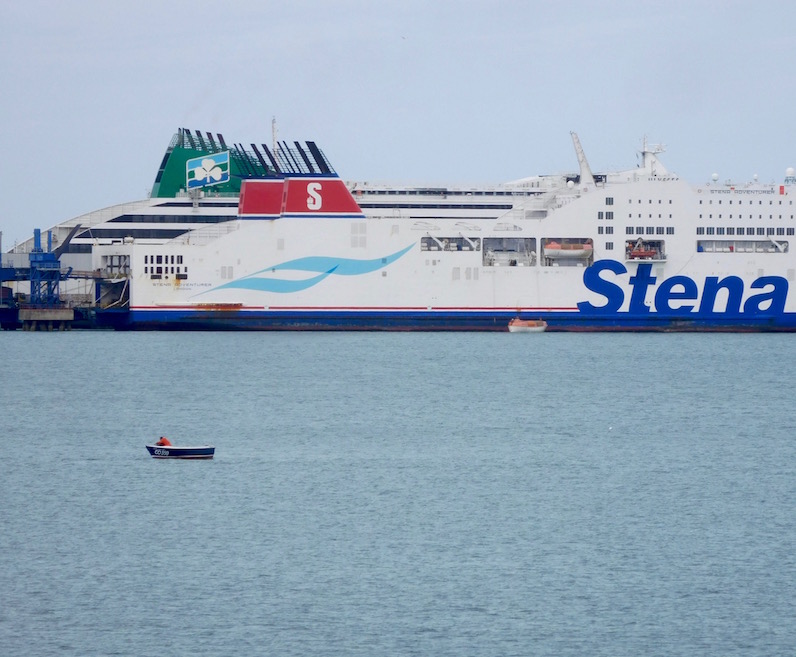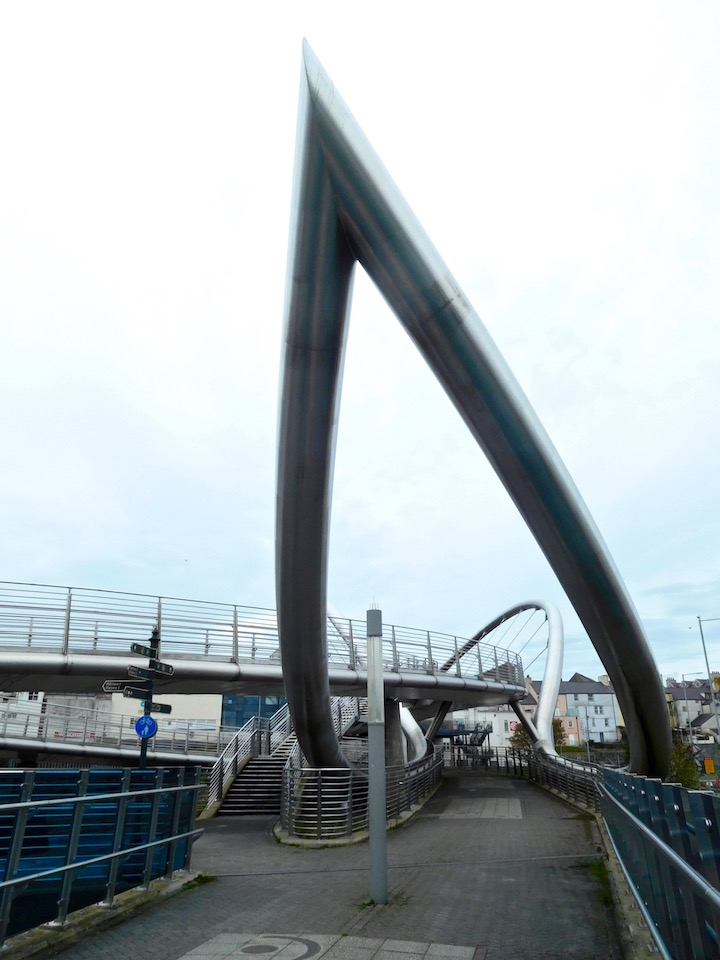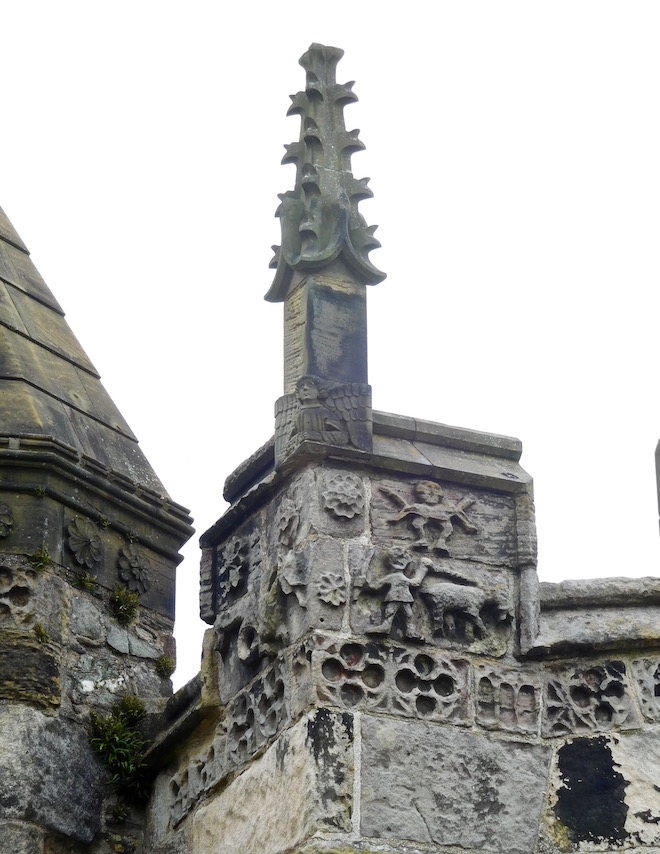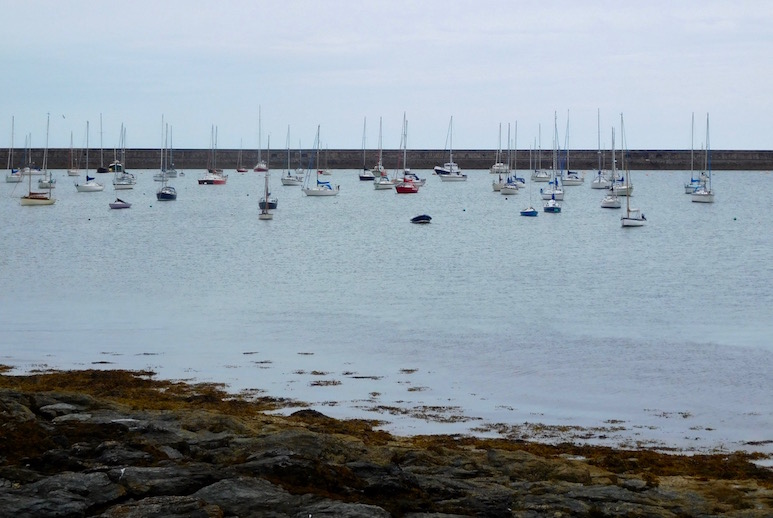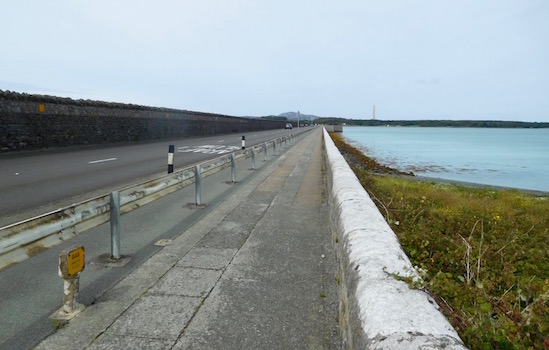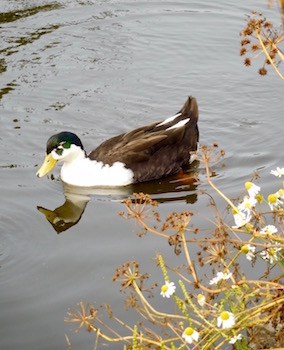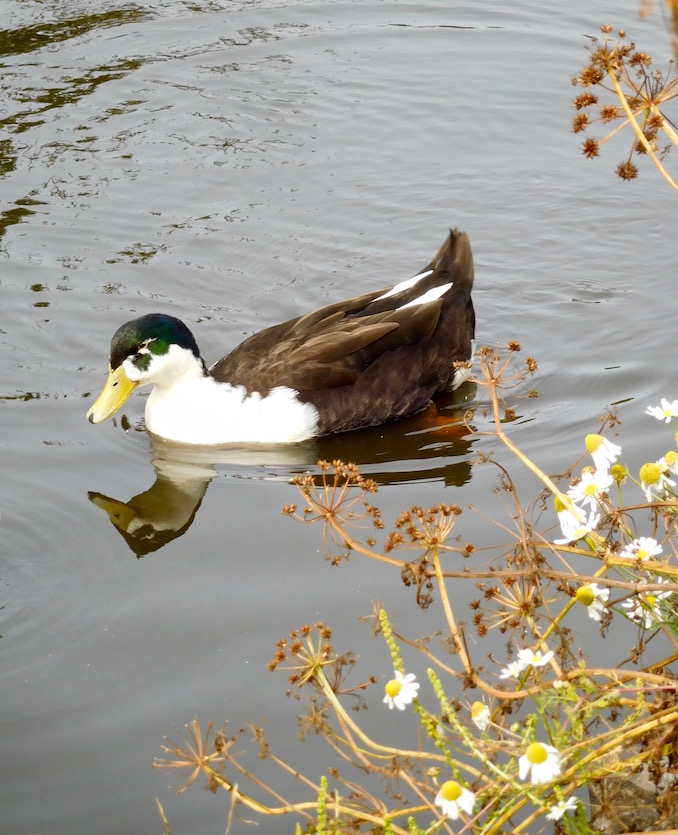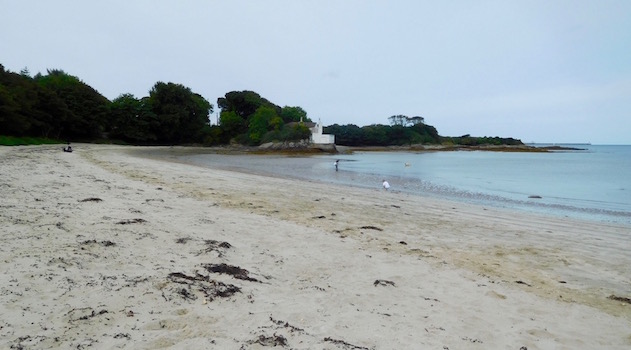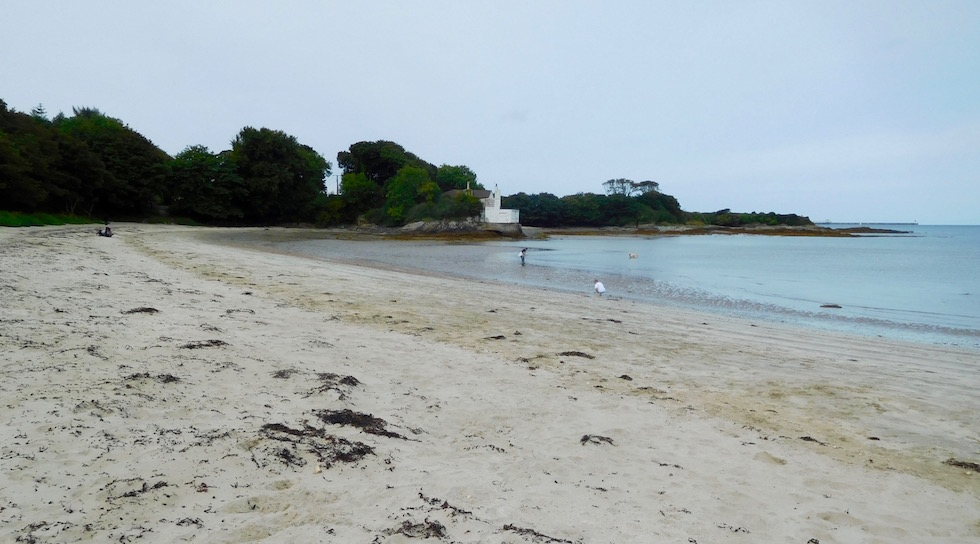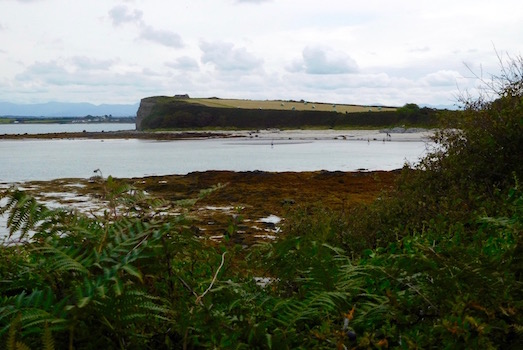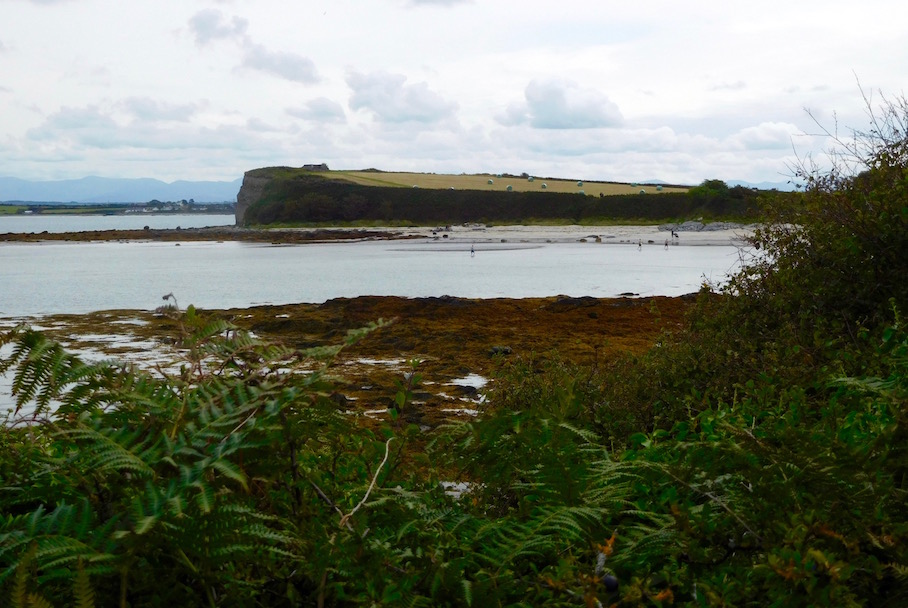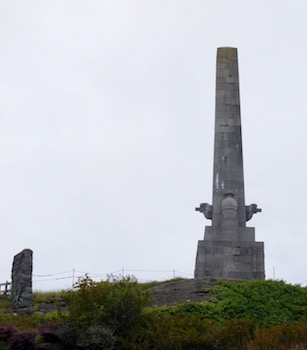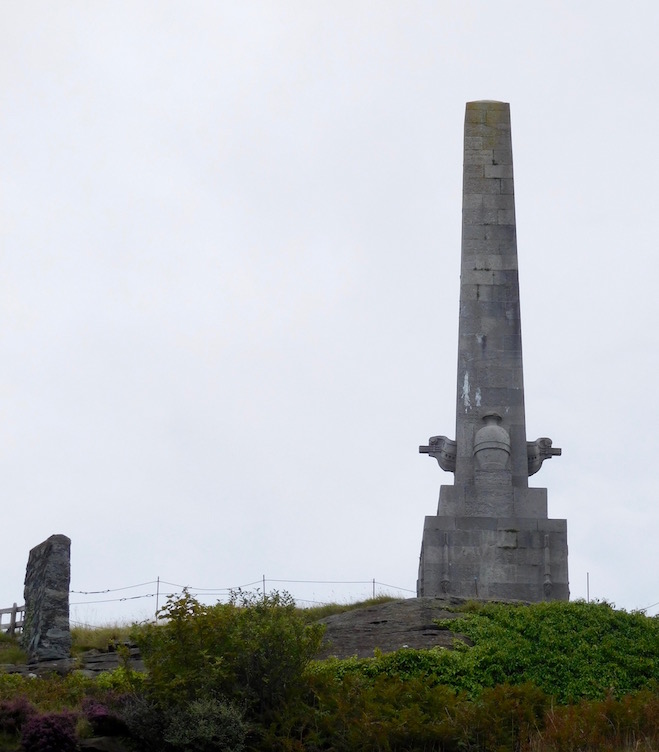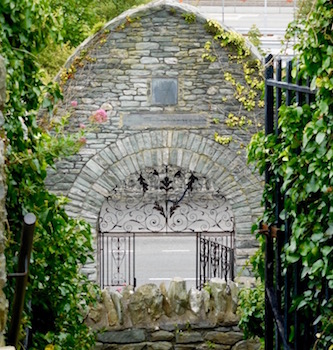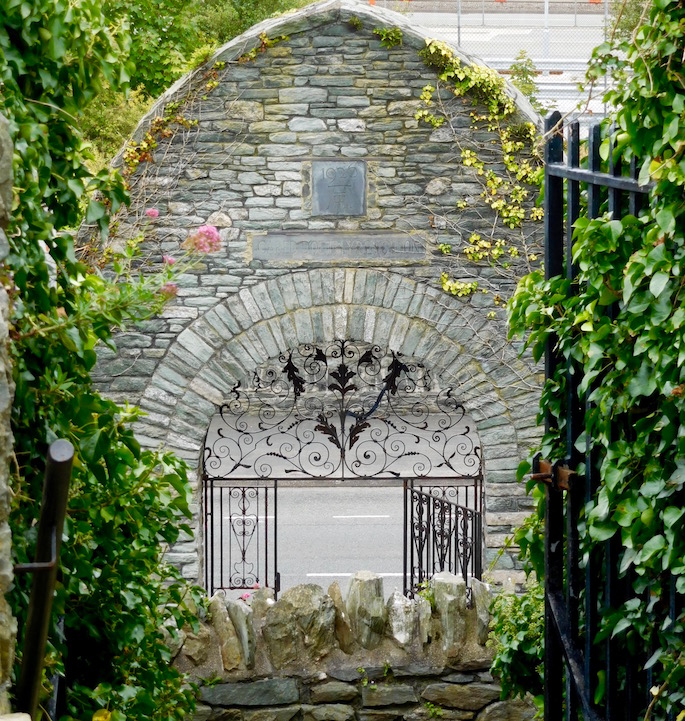Day 86
Llanfachraeth to Holyhead: 8 miles
Food of the Day: Fish Tacos
Reason: Even if there wasn't lime, still good
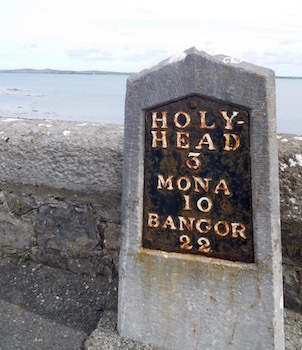
So, when I looked at a map today, it finally registered what going to Holyhead meant - going onto another island. I remember just a a week or so ago in Bangor, I'd felt like I was almost home as I walked in a but of Gwynedd, only to be thwarted by going north onto Anglesey. Now, just as I'd done three quarters of Anglesey, there was another island. So basically I have to hike around an island to get back to hiking an island before I get back to hiking around Wales. Which, when you think about it, is also on an island.
The confusing number of islands aside, this was kind of dispiriting. Although I have been looking forward to Holyhead Mountain, at some point I do hope I'll feel like I'm getting somewhere again.
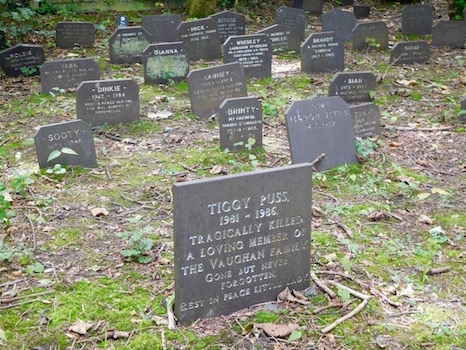
Embankments and Squirrels
So with a heavy heart I found myself walking away from Llanfachreath, across the green bridge I'd passed yesterday, through some wetlands, and along some fairly flat coast toward Holyhead. Unfortunately I'd chosen to walk close to high tide, so around Newlands Park I had to divert inland because the low tide path was underwater.
The walk was flat and easy, and had decent views back up to northwest Anglesey. Crossing the Stanley Embankment - built in the early 19th century to finish off the London - Holyhead highway (and effectively the road to Dublin) - was easy enough, although walking next to a highway is rarely calming.
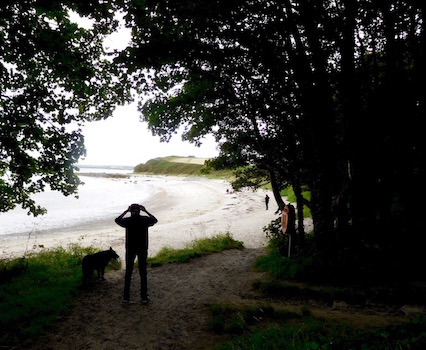
Only a bit farther on is Penrhos Coastal Park, a small bit of greenery with a duck pond, a rather large and formal pet cemetery, and coves, beaches and walking trails that make it feel a world away from the highway I just walked off of.
It also sports a red squirrel population. Which, if you didn't know, is the squirrel population that's actually native to the UK. I've had several people inform me that grey squirrels are like rats (which I heartily agree with), that they push out the red squirrels, and most importantly, that they are actually from the United States and are only here because some snuck onto a boat at some time in the past and the UK has never been the same since, thank you very much. The several times I was told this, it was with the implication that as an American, these squirrels were somehow my fault. Jokingly, I hope, but since it's happened more than once, I'd like to point out that the ship that brought the annoying things back here was more than likely British, so please leave me out of this.
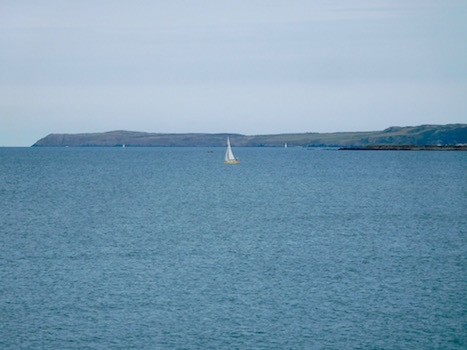
Anyway, I didn't see any of the good native red squirrels on my walk, but apparently there's a whole society devoted helping them thrive and it appears to be working. And no we Americans are not all carrying secret grey squirrel caches in our backpacks in an attempt to start another War of American Squirrel Independence. We actually don't like grey squirrels much either.
And then there was Holyhead
After the trees and hidden coves of Penrhos Park, I wandered for a short bit of coast that winds around fields, past some crumbling buildings and a bit more coastline. But really the dominating feature of the scenery was the car ferry at Holyhead. As I've mentioned several times in this blog, the reason Anglesey is even connected to the mainland (i.e. why the first bridge was built) was to better connect London to Dublin when the two were ruled by the same government. The highway that runs through the middle of Anglesey is honestly one of the best highways I've seen in Wales (outside of the southern corridor) and mostly it consists of freight and car traffic headed straight through Wales to get to Ireland.
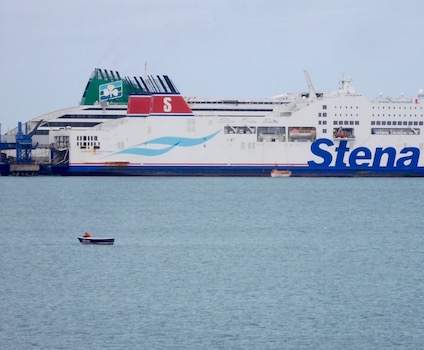
And to get semi's and cars to Ireland, you need a giant boat. And this was one was gigantic. To be fair, I've barely even seen large buildings since I passed through Cardiff, and the vast majority of what I've been walking through has been empty nature where the biggest thing involved has been a cow. So to me, the boat looked enormous, in particular contrasted with the tiny fishing boat in front of it.
So I made for the giant landmark through the backyards of some apartments, and through the type of trail I've come to expect when coming into larger towns (Holyhead is the largest town on Anglesey, though to be fair it's not actually that big). I passed through grey houses and gates and really the main remarkable thing was a giant pillar up on a hill, which when I passed by the bottom I learned was dedicated to someone whose father was 'the last Attorney General for the State of New Jersey.' It took me a second to figure out that this didn't mean New Jersey actually doesn't have a prosecutorial system and I completely wasn't aware of it (though I'll happily blame Chris Christie for no apparent reason). What they meant was 'the last Attorney General for the State of New Jersey BEFORE those Troublesome Americans Had a Revolution' - aka the last British Attorney General for the State of New Jersey.
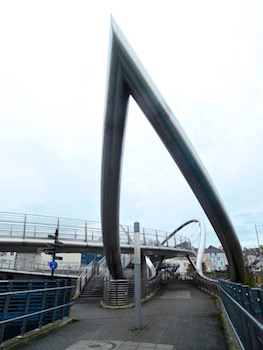
John Skinner, to whom the pillar is dedicated, was born in New Jersey to the then Attorney General. His father formed a militia that fought for the King, and John joined the Royal Navy. When the War was over, having been on the losing side, they both retired to Bristol. At the end of the 18th century he was put in charge of the mail packet at Holyhead, and is described as a generous benefactor to the town during a time when the town must have been seeing a lot of change. He stayed in this important job until he was swept overboard near South Stack 30 years later.
Anyway, mystery solved, I followed the path through the train station (it literally goes through the train station that ends at the boat dock) and over a very architecturally interesting bridge called the 'Celtic Gateway'. There were plaques and bronze medallions all over it, recalling the towns Roman and Celtic heritage. It would have been nicer on a less gray day, but as it was it was interesting enough, and dropped me right in the center of town, only to immediately then pass through St. Cybi's churchyard.
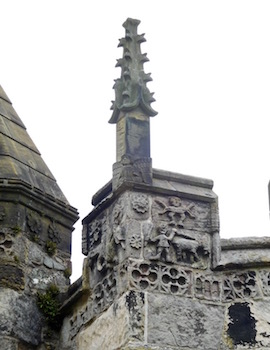
St. Cybi's is officially the beginning and end of the Anglesey Coast Path, which the Wales Coast Path largely follows on Anglesey. The walls surrounding the churchyard were originally built as a Roman fort in the 4th century, when the Roman Empire was collapsing and the area needed to be defended against Irish sea raiders. They even kept an 'early warning system' on Holyhead Mountain to warn the town of danger arriving by sea.
By the 6th century, however, the Romans were gone, and the King of Gwynedd gave the spot to St. Cybi, who built a monastery here, though the current church is largely from the Middle Ages. Apparently, St. Cybi and St. Seiriol, who you might recall lived down in Penmon Priory close to Beaumaris, were close friends, and would walk to meet each other all the time at the holy well of Clorach. Because of the direction of their walks, Cybi (facing the sun) was always tan, while Seiriol (with his back to the sun) was always pale. This is a story I can relate to at the moment, because currently my right hand side is mysteriously much more tanned than my left.
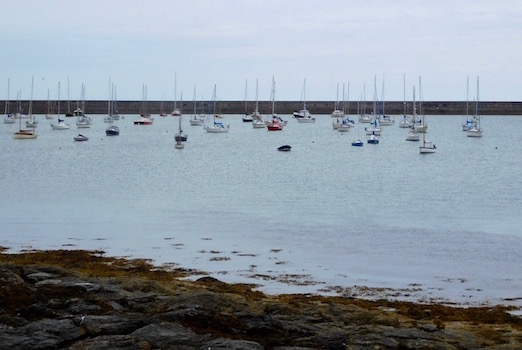
Anyway, as I continued on through Holyhead, I passed any number of small restaurants, but one stood out - because it was a 'street food' restaurant that was clearly brand new and aimed at the hipster crowd if the minimalist glass and metal fronting meant anything. And when I looked at the menu I was surprised to learn that I could get fish tacos, Vietnamese spring rolls and Chinese pork dumplings, as well as Margaritas, all in the same establishment.
Which I did shortly thereafter, having fought my way through the finish line of a hundred mile bicycle race and meeting P at the longest breakwater in Britain (1.5 miles) and simply saying 'So I saw a place that had fish tacos!' It wasn't a hard sell.

